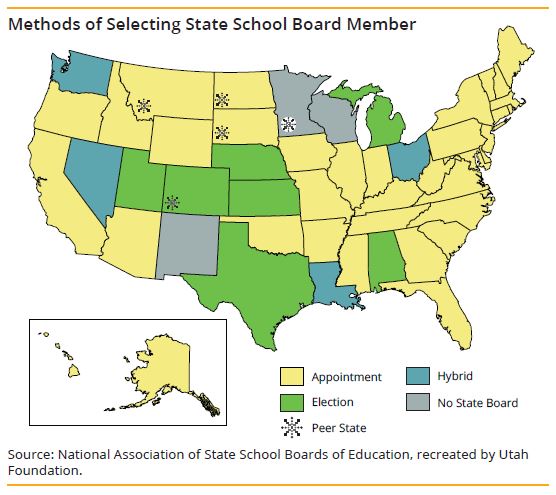In 2014, the nomination process for the Utah State Board of Education was challenged and ruled unconstitutional. The ruling demanded that Utah come up with a better solution. During the 2015 General Session, several suggestions were proposed but none were passed. Additional suggestions have also been proposed during the 2016 General Session.
Spurred by the need for changes in the selection process of the State Board, Utah Foundation wanted to explore how education governance works. Additionally, Utah Foundation conducted a survey of local and state level education officials, asking questions about who currently is responsible for various responsibilities, and who should be.
This report examines education governance through two lenses. One, through the lens of potential approaches to solving the State Board selection process, and the other through the interconnected network of state and local players. The report concludes with a question: should the responsibilities in Utah’s public education system stay as they are, or is now an opportune time to examine how those responsibilities are distributed?
KEY FINDINGS:
- A Utah Foundation survey of education officials at the state and local levels indicated a desire for more local control regarding revenue generation, resource allocation, training and professional development, testing and assessment, and standards (see pages 5-7).
- In the 2015 General Session, Utah passed the second highest number of bills in the nation relating to education (see page 4).
- While elected boards might provide more accountability and responsiveness to voters, appointed boards might provide stability and are better suited to technical and financial decisions (see pages 11)
- Utah’s state board election process is unique to seven states. Thirty-six states have appointed state boards, while four others have a mix of appointed and elected state board members (see page 10).


